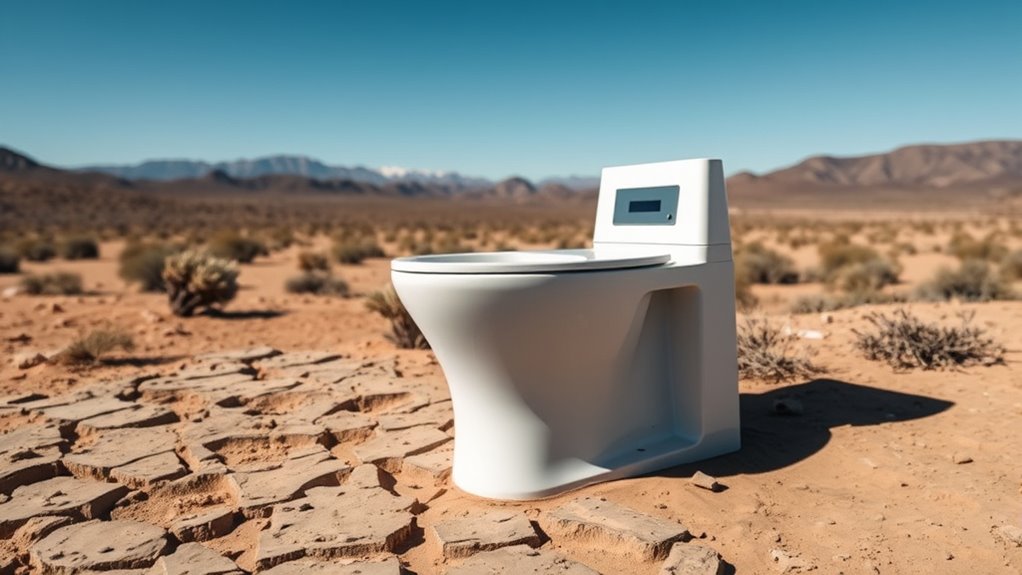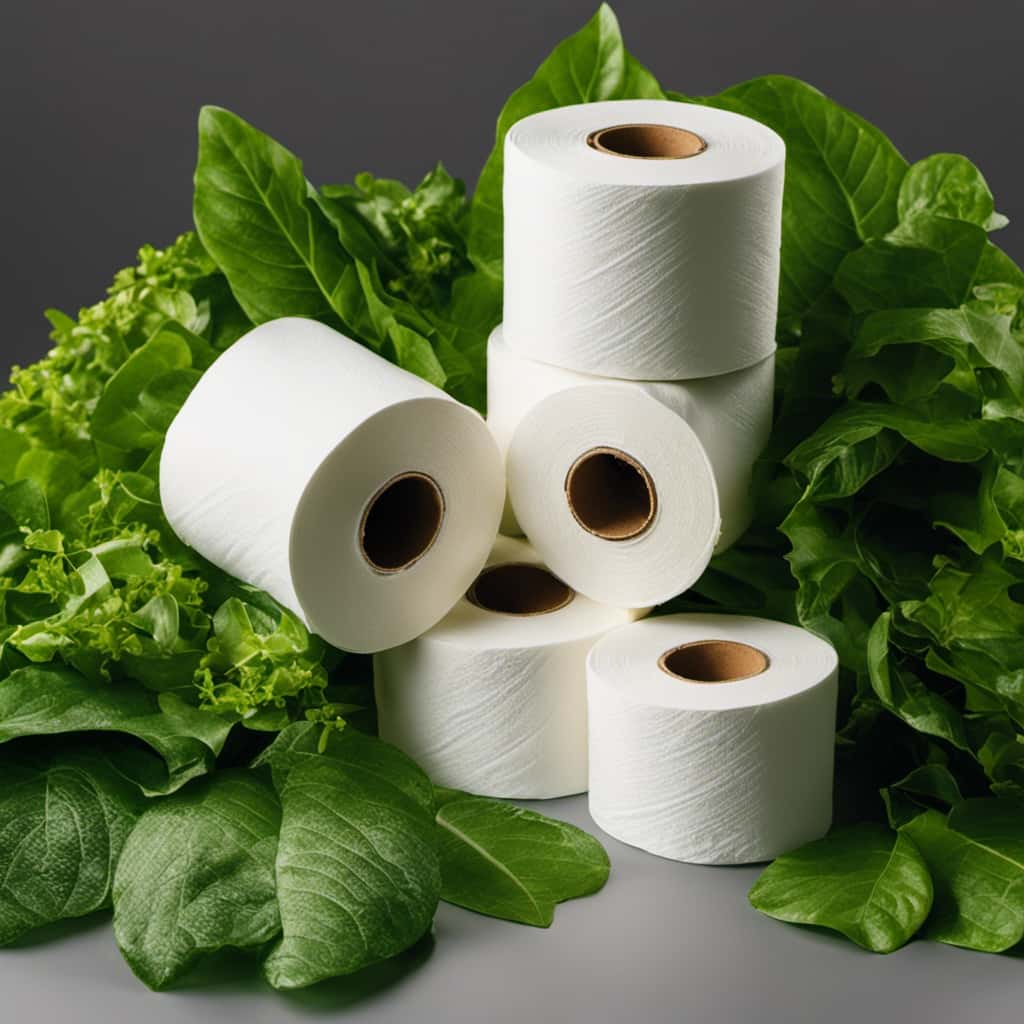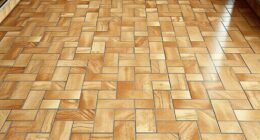Waterless incinerating toilets offer a sustainable, odor-free waste management option perfect for off-grid living. They require no water or sewer connection, using combustion to convert waste into ash, making them environmentally friendly and easy to maintain. Designed for remote locations, these toilets help you manage waste hygienically while reducing environmental impact. If you want to learn more about how these systems can fit into your off-grid lifestyle, continue exploring their features and benefits.
Key Takeaways
- Waterless incinerating toilets provide eco-friendly, self-sufficient waste management in remote, off-grid locations without sewer access.
- They utilize combustion and natural odor control to sterilize waste, eliminating foul smells and reducing environmental impact.
- Automated incineration cycles and easy ash removal simplify maintenance for off-grid users.
- These toilets support sustainable living by minimizing water use and waste footprint in eco-conscious setups.
- Ideal for cabins, remote homes, and outdoor locations, offering a practical, hygienic alternative to traditional sanitation systems.

Waterless incinerating toilets offer an innovative solution for managing human waste without relying on water or traditional sewage systems. This technology is particularly valuable in remote locations, off-grid homes, or eco-friendly setups where conventional plumbing isn’t feasible. Instead of flushing waste into sewers, these toilets use a combustion process to convert waste into ash, eliminating the need for water-based systems. As you consider installing one, you’ll be pleased to know that these units are designed to be environmentally friendly and self-sufficient.
Waterless incinerating toilets provide eco-friendly waste management in remote and off-grid locations.
A key feature of waterless incinerating toilets is their use of biodegradable materials. These materials are essential in ensuring the waste is broken down efficiently during incineration, minimizing environmental impact. By choosing biodegradable options, you support a cleaner process that reduces the release of harmful chemicals or non-degradable residues. These materials also help in controlling odors naturally, making the toilet more comfortable to use without relying on chemical odor control techniques. Instead, the design often incorporates natural ventilation systems and heat management to keep smells at bay.
Odor control is a critical aspect of waterless incinerating toilets. Since waste is burned rather than stored, the typical foul smell associated with traditional composting or pit toilets is considerably reduced. Many units utilize heat to sterilize waste immediately, further controlling odors and preventing bacterial growth that could cause unpleasant smells. Some models include activated charcoal filters or other natural filtration methods that absorb and neutralize residual odors. These techniques ensure that the toilet remains hygienic and odor-free, even after repeated use, making them suitable for homes, cabins, or outdoor locations where comfort is a priority.
You’ll also appreciate the low maintenance involved with these systems. They generally require periodic ash removal, which is straightforward and clean. The incineration process itself is automated in many models, meaning you simply need to operate a switch or button to start the cycle. This ease of use, combined with eco-friendly features like biodegradable materials and natural odor control techniques, makes waterless incinerating toilets a practical and sustainable choice for off-grid living.
Frequently Asked Questions
How Long Does a Typical Incinerating Toilet Last?
A typical incinerating toilet’s durability lifespan usually ranges from 7 to 15 years, depending on usage and maintenance. You should follow the recommended replacement schedule, which often involves checking components annually and replacing parts as needed. Proper upkeep, such as regular cleaning and servicing, extends the toilet’s lifespan. Keep an eye on wear and tear to ensure it functions efficiently throughout its life.
Are Waterless Incinerating Toilets Environmentally Friendly?
You might wonder if waterless incinerating toilets are environmentally friendly. They have a positive environmental impact by reducing water use and minimizing sewage discharge. Their sustainability benefits include lower energy consumption and less need for waste transport. Overall, these toilets help you reduce your ecological footprint, making them a responsible choice for off-grid living or eco-conscious setups. They support a cleaner, greener environment while providing efficient waste management.
What Maintenance Is Required for These Toilets?
Think of maintenance as tending a garden; you must keep it clear and balanced. For these toilets, you’ll monitor the biodegradation process, ensuring it runs smoothly, and regularly empty the ash container. Follow proper ash disposal procedures to avoid buildup. Routine checks keep the system humming, preventing odors and ensuring efficient operation. With a little care, your off-grid waste management stays eco-friendly and hassle-free, like a well-tended garden.
Can They Be Used in Cold Climates?
In cold climates, you can use waterless incinerating toilets, but insulation challenges might arise. You’ll want to guarantee they’re well-insulated to prevent freezing of internal components and maintain proper operation. Choosing models designed for colder environments or adding extra insulation can help. With proper preparation, these toilets work efficiently in cold weather, providing off-grid waste management solutions without the need for water or extensive plumbing.
How Do Incinerating Toilets Handle Odors?
Think of odor control as a fortress defending your space. Incinerating toilets use built-in ventilation systems to vent odors away, keeping your environment fresh. When you activate the incineration process, it burns waste efficiently, leaving minimal smell behind. The ventilation system plays a vital role, drawing odors out before they escape. This combination ensures you won’t be overwhelmed by unpleasant smells, making off-grid living more comfortable and odor-free.
Conclusion
Choosing a waterless incinerating toilet means you’re embracing a practical, eco-friendly solution for off-grid waste management. It’s a smart way to reduce water use and minimize environmental impact, giving you independence from traditional plumbing. Remember, “A penny saved is a penny earned,” and in this case, saving water and reducing waste pays off in the long run. So, take charge of your waste with confidence—your planet and wallet will thank you.










